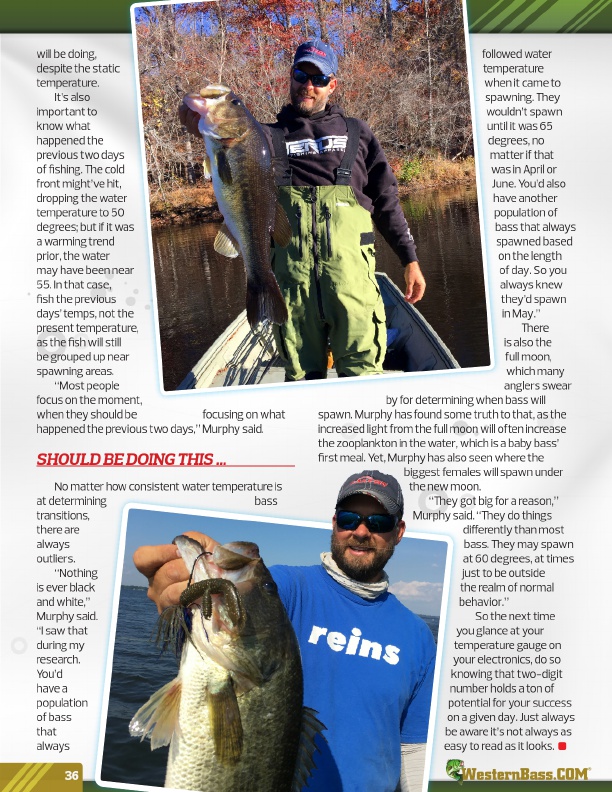
will be doing, despite the static temperature.
It’s also important to know what happened the previous two days of fishing. The cold front might’ve hit, dropping the water temperature to 50 degrees; but if it was a warming trend prior, the water may have been near 55. In that case, fish the previous days’ temps, not the present temperature, as the fish will still be grouped up near spawning areas.
“Most people focus on the moment,
when they should be
focusing on what
happened the previous two days,” Murphy said.
SHOULD BE DOING THIS …
No matter how consistent water temperature is
at determining
bass
transitions, there are always outliers.
“Nothing is ever black and white,” Murphy said. “I saw that during my research. You’d have a population of bass that always
36
followed water
temperature
when it came to
spawning. They
wouldn’t spawn
until it was 65
degrees, no
matter if that
was in April or
June. You’d also
have another
population of
bass that always
spawned based
on the length
of day. So you
always knew
they’d spawn
in May.”
There
is also the
full moon,
which many
anglers swear
by for determining when bass will spawn. Murphy has found some truth to that, as the increased light from the full moon will often increase the zooplankton in the water, which is a baby bass’ first meal. Yet, Murphy has also seen where the
biggest females will spawn under
the new moon.
“They got big for a reason,”
Murphy said. “They do things
differently than most
bass. They may spawn
at 60 degrees, at times
just to be outside
the realm of normal
behavior.”
So the next time
you glance at your
temperature gauge on
your electronics, do so
knowing that two-digit
number holds a ton of
potential for your success
on a given day. Just always
be aware it’s not always as
easy to read as it looks.
®